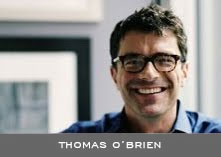In late 2007 Meade Design Group was approached by DVBA (Downtown Victoria Business Association) and IPC Decor to create an image that represents the group of businesses within what will be known in the future as "The Design District" in Victoria B.C. It was specified that this image would be applied to street signs throughout the design district as well as further marketing applications at a later stage.
If you have ever wondered what a designer thinks about and considers when making a logo, read on. Here is our case study for The Design District project.
Objective
Our goal was to create an image that brings all of the designers and businesses related with design in the area together into an image that embodies them as a community and gives them an identifiable branding. We also aimed to bring together the past of this historic area with the future growth that it has potential for.
We researched the logos of the design businesses in the area. Below are selections of some of the logos found in the design district. The majority of the logos in the area have been created with a classic sensibility and work with the surrounding architecture. We had to take these factors into account while conceptualizing branding for the design district.
Architecture
Another signficant factor we considered was the architecture of the area. Here are two images that show the architectural diversity that are in The Design District.

Colour
The colours of the street and other signs will also need to be taken into consideration. The colours, particularly in China Town are quite vibrant and compete with other bold colours that are placed next to it.
For this reason, the colours we chose to use in the logo are cream, gray and charcoal. The charcoal and gray give a sophisticated look and feel when placed next to the red and blue that is so prominent in this part of town.

Identity Concept
Our concept is “D Squared” D2
We feel this name identifies the design district in a number of ways. It is classic in its creation but contemporary in its approach. It is a play upon the phrase “Design District”, taking the two Ds and squaring them with the idea that the square represents the city blocks of the area.
D2 is also symmetric in its approach and it reads well with all the serif typography used by the design businesses within the district.
We took inspiration from the classical elements in the district's architecture and decided to layout the D’s such that they create a roman numeral [ II ]. This orientation also creates the illusion of door handles, a representation that The Design District is open to all. Here is the new logo for the Design District.

Signage
With the logo established, the next task was the design of the sign. Our aim in creating the sign was to produce a distinctive and representational emblem that does not add visual pollution but instead works with its surroundings. This is our design:
 Here are some explanations of the sign's design.
Here are some explanations of the sign's design.
The shadowing of the typography signifies the design community coming together in this project, falling into place to create a unified community.
This unified community is again represented through the solid cream bar that extends up to The Design District logo.
An asymmetrical positioning makes the typography look contemporary and confident and the classic font face suggests tradition and experience. This coming together of the two elements shows the joining of past and present within the design district itself.
And there you have it - the ideas, inspirations, and considerations that have gone into the design district logo. Look for it in on a street sign in 2008.
MEADE DESIGN GROUP - THE BLOG. Copyright 2007-2011






































































































































